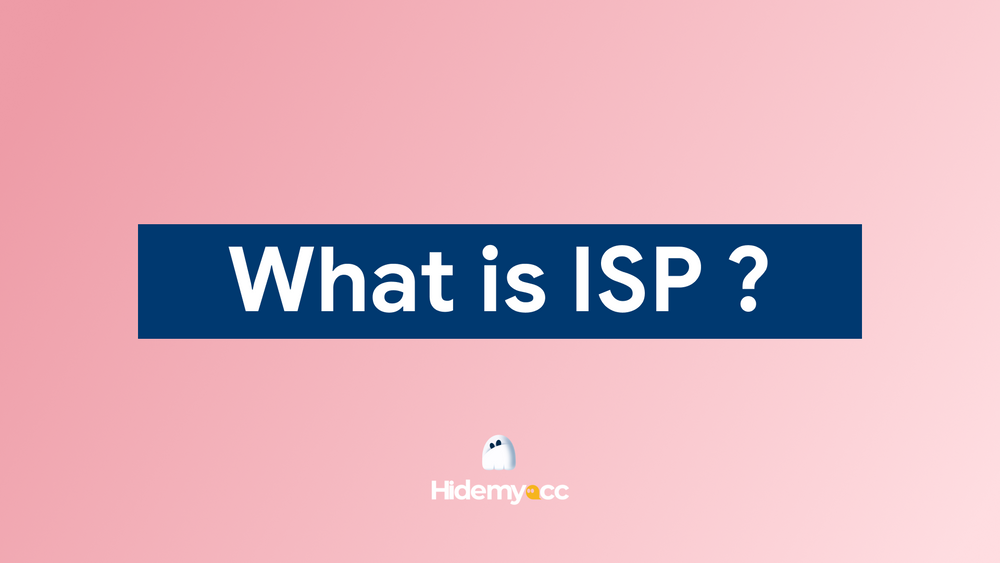What is a Reverse Proxy? This term is essential in networking and information technology, frequently used in server systems. In this article, we’ll explore reverse proxies with Hidemyacc, covering everything from fundamental concepts to practical benefits and applications that enhance performance, security, and user experience. Discover more now!
1. What is Reverse Proxy?
A reverse proxy is a specialized server that acts as a "bridge" between users and backend servers, serving as an intermediary in the communication process. In network architecture, a reverse proxy—sometimes called a "reverse server"—is often deployed to perform essential functions, including traffic management and enhancing system security.
>>>Learn More: Datacenter Proxy 101: All You Need To Know About Datacenter Proxy
2. How does Reverse Proxy work?
The operating principle of a reverse proxy centers on bridging clients and backend servers, effectively managing traffic and enhancing system security. Here’s an outline of how a reverse proxy works:
- Receive request from client: Reverse Proxy receives requests from clients, usually via HTTP or HTTPS protocol.
- Determine the destination server: Reverse Proxy determines which internal server needs to handle the request based on preconfigured rules.
- Forward request: The request is transferred to the destination server for processing.
- Receive response from server: Reverse Proxy receives response from the server after the request is processed.
- Pass the response to the client: The response from the server is sent back to the client by Reverse Proxy, completing the process.
>>>View More: Residential Proxy- How Does It Work & Benefits of Using Residential Proxy
3. Benefits of using Reverse Proxy
Using a reverse proxy offers numerous valuable benefits for systems and web environments. A reverse proxy not only enhances security but also boosts performance, scalability, and access management for web systems. Here are the key benefits of using a reverse proxy:
- Security: Reverse proxy hides the actual server's IP address, helping prevent attacks such as DDoS and SQL injection, protecting the system from direct threats.
- Load distribution: With load balancing capabilities, reverse proxies share traffic between different servers, improving performance and reducing the risk of overloading any one server.
- Caching: Reverse proxy caches popular content, shortens page load time and increases access speed for users without accessing the final server.
- Management and control: Reverse proxy allows access management, applying access blocking rules and monitoring network activity, ensuring system security.
- SSL/TLS Offloading: Reverse proxy handles SSL/TLS encryption and decryption, helping to reduce the load on the final server and improve performance.
- URL routing: Reverse proxy can redirect requests to different servers according to certain rules, helping to divide traffic for different applications and services.
>>>Check It Out: Why You Should Check Proxy and Firewall Settings for a Secure Connection
4. Application of Reverse Proxy
A reverse proxy plays a crucial role in optimizing the performance and security of server systems. Below are the key applications of a reverse proxy:
- Hides the IP address of the origin server, helping to increase security.
- Integrated firewall feature, protects against attacks such as DoS, and supports malware removal.
- Offload TLS encryption from the web server, reducing the load on the origin server by using hardware accelerated TLS.
- Distributes load between servers, with the ability to rewrite URLs for each request to match resource location.
- Reduce server load by caching dynamic and static content, improving web performance.
- Optimize content through compression, shortening page load time.
- Use "spoon-feeding" technology to stream content slowly, freeing up server resources.
- Works effectively in places with many web servers, analyzing and forwarding requests to the correct server on the internal network.
- Supports A/B and multivariate testing without integrating JavaScript or code into the page.
- Provides HTTP access authentication for web servers that do not have built-in authentication functionality.
5. Risks of using Reverse Proxy
While a reverse proxy offers significant performance and security advantages, it also presents potential risks. Here are some challenges to be aware of when using a reverse proxy:
- Configuration error: Incorrect configuration can lead to connection errors and incorrect load distribution.
- Congestion: An unoptimized Reverse Proxy can become a bottleneck, causing delays in processing thousands of concurrent connections.
- Single point error: If Reverse Proxy crashes, the entire system may be affected. There needs to be a backup solution to avoid this situation.
- Security: Security vulnerabilities can be exploited, increasing the risk of attacks on internal systems.
- Performance: Adding a Reverse Proxy can increase latency if not optimized, affecting system performance.
- System complexity: Using Reverse Proxy increases complexity, making troubleshooting and maintenance difficult.
To minimize these problems, configuring and managing Reverse Proxy requires care and in-depth knowledge of the network system.
6. Compare Reverse Proxy and Forward Proxy
Proxy servers are essential in network architecture, with two common types: reverse proxy and forward proxy. While both are proxy servers, they operate with different mechanisms and serve distinct purposes. Below is a comparison between reverse proxy and forward proxy:
|
Criteria |
Reverse Proxy |
Forward Proxy |
|
Location and access flow |
Placed on the final server side, receives requests from users and passes them to the backend server. |
Placed on the user side, receives the request and passes it to the external server. |
|
Functions and applications |
Provides load balancing, caching and backend server protection, and access management. |
Helps anonymize users, control access, and apply security policies. |
|
Security and control |
Hides the IP address of the backend server, prevents direct attacks and protects important information. |
Anonymize users and manage access, protect identities when accessing the Internet. |
|
Deployment and management |
Requires technical knowledge and complex configuration; Usually deployed in an internal network environment. |
Easily deployed on personal computers, users can configure and manage themselves. |
In short, Reverse Proxy and Forward Proxy both play an important role in optimizing performance, security and access management in the network, but each type has its own applications and deployment requirements.
This article has explored “What is a Reverse Proxy?”—a powerful networking technology for managing and safeguarding web applications. We hope this overview from Hidemyacc has clarified the role and benefits of reverse proxies.
For enhanced benefits, combine reverse proxies with the Hidemyacc Antidetect Browser. Hidemyacc enables easy multi-account management, personal data protection, and improved efficiency, especially in the MMO field. Sign up today for a free 7-day trial with Hidemyacc!
>>>You May Also Like:






